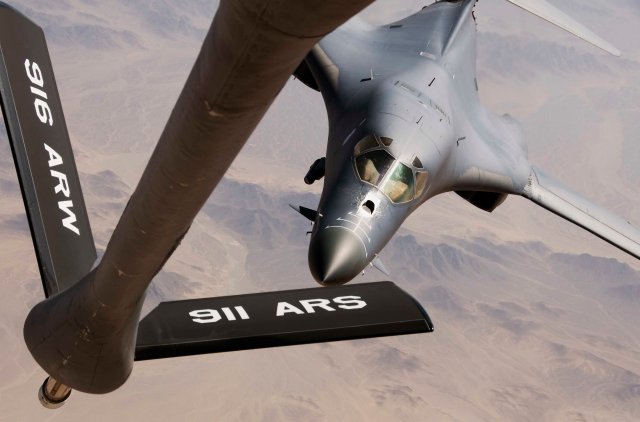Breaking news
USAF to deploy B-1B bombers to Guam for the first time since 2006.
| a | |||
|
|
|||
|
World Aviation Defense & Security News - United States
|
|||
|
|
|||
|
USAF to deploy B-1B bombers to Guam for the first time since 2006
|
|||
|
The U.S. Air Force’s B-1B Lancers are scheduled to deploy to Andersen Air Force Base, Guam, Aug.6 for the first time since April 2006 in support of U.S. Pacific Command’s Continuous Bomber Presence mission, the PACAF announced on its website on July 28, 2016.
|
|||
|
|
|||
 USAF's B-1B Lancer bombers will be deployed to Andersen Air Force Base for the first time in 10 years USAF's B-1B Lancer bombers will be deployed to Andersen Air Force Base for the first time in 10 years(Credit: US Air Force) |
|||
|
|
|||
|
The B-1’s will replace the B-52’s currently deployed from Minot Air Force Base, North Dakota While this is not the first basing of B-1s in the PACOM area of responsibility, it is the first time in 10 years.
With a large weapon capacity and exceptional standoff strike capability, the B-1 will provide U.S. Pacific Command and its regional allies and partners with a credible, strategic power projection platform. This forward deployed presence demonstrates continuing U.S. commitment to stability and security in the Indo-Asia-Pacific region. The bombers will be accompanied by approximately 300 Airmen from Ellsworth Air Force Base, South Dakota. Air Force Global Strike Command continues to routinely deploy bombers to Andersen AFB, which provide opportunities for our Airmen to advance and strengthen regional alliances and our long-standing military-to-military partnerships throughout the Indo-Asia-Pacific. The B-1 units bring a unique perspective and years of repeated combat and operational experience from the Central Command theater to the Pacific. They will provide a significant rapid global strike capability that enables our readiness and commitment to deterrence, offers assurance to our allies, and strengthens regional security and stability in the Indo-Asia-Pacific region. Most importantly, these bomber rotations provide Pacific Air Forces and U.S. Pacific Command commanders a global strike and extended deterrence capability against any potential adversary. The B-1B, which first went into operation with the U.S. Air Force in the 1980s, is capable of reaching speeds of up to Mach 1.25, or 1,335 kph, at an altitude of just 1.5 kilometers. It can carry nuclear weapons, as well as conventional guided bombs, such as the GBU-31, the GBU-38 and the GBU-54. |
|||



















